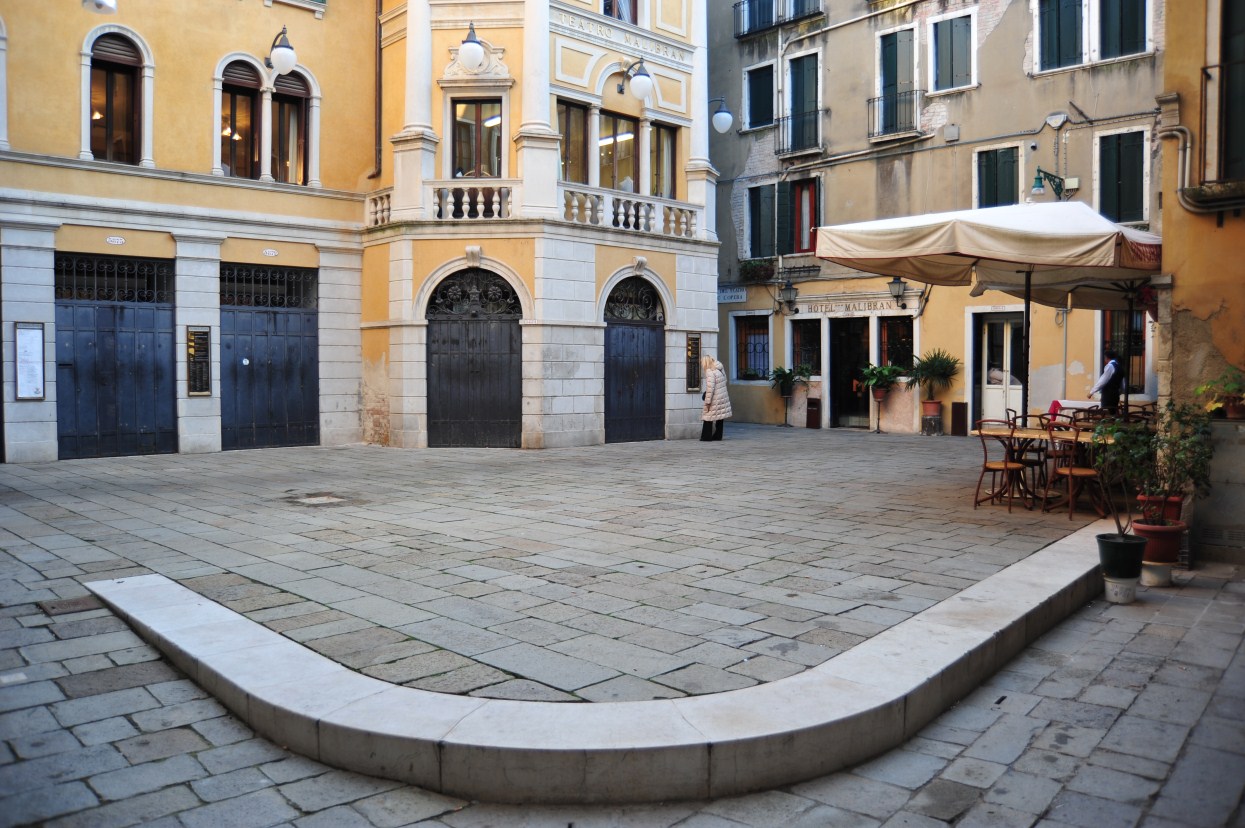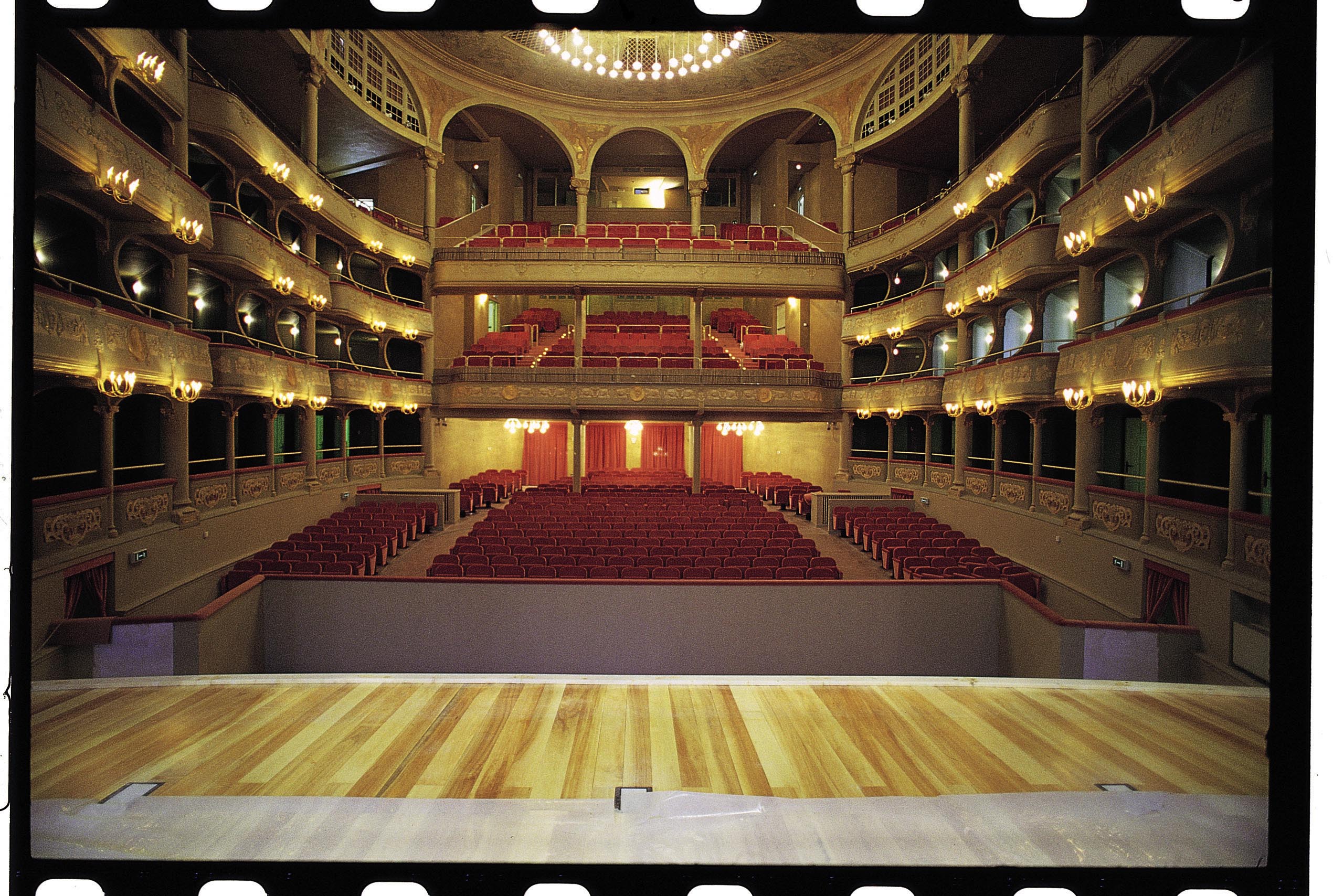Teatro Malibran
 Teatri
Teatri
Descrizione
Il teatro di San Giovanni Grisostomo venne edificato in soli quattro mesi sul finire del 1677 sul sito dov'era edificata anticamente la dimora di Marco Polo, cosa peraltro provata dal vicino toponimo della Corte del Milion. Artefici dell'iniziativa furono i fratelli Grimani di Santa Maria Formosa i quali svolsero un'intensa attività imprenditoriale in campo teatrale. Nonostante alla fine del '600 a Venezia vi fossero ben 18 teatri, questo conquistò da subito un posto di primario interesse per il pubblico veneziano essendo "il più grande, il più bello e il più ricco della città" (J.C. de Cramailles, 1683).
Il progetto del 1919, a firma dell'ing. Donghi, con largo impiego di cemento armato, interpreta la struttura fisica preesistente sfruttando la forma allungata del lotto per ricavare due gallerie davanti alla scena; per compensare questa dilatazione in lunghezza della sala teatrale è stata allargata la sala stessa, cosa che ha comportato la costruzione dei corridoi a sbalzo sul rio di San Giovanni Grisostomo e l'occupazione edilizia della calle laterale.
Questo teatro, che dal 1835 aveva assunto il nome di teatro Malibran, dal nome della grande cantante che qui aveva cantato la Sonnambula, venne acquistato nel 1992 dal Comune di Venezia ed è ora divenuto la seconda sede del Teatro La Fenice.
Fonte: Venezia Unica.
The Teatro di San Giovanni Grisostomo was built in just four months at the end of 1677 on the former site of Marco Polo’s ancient home, a circumstance demonstrated by the name of the courtyard nearby, Corte del Milion.
It was commissioned by the Grimani brothers from Santa Maria Formosa, who were actively involved in the theatre business. Though there were as many as 18 theatres in Venice by the end of the seventeenth century, this theatre in particular was quick to become one of the most popular theatres for Venetian audiences, and was described as “the biggest, the most beautiful and the richest in the city” (J.C. de Cramailles, 1683).
The project designed by the engineer Donghi in 1919, which made ample use of reinforced concrete, interpreted the existing physical structure by exploiting the length of the building site to create two galleries in front of the stage; to compensate for the increased length of the theatre space, the room itself was widened, requiring the construction of corridors cantilevered over the canal of San Giovanni Grisostomo, and an extension of the building into the street on the other side.
The Theatre, which was renamed Teatro Malibran in honour of the great singer Maria Malibran who had sung La Sonnambula here, was purchased by the City of Venice in 1992 and has now become the second home of the Gran Teatro La Fenice.
Source: Venezia Unica.
Das Theater von San-Giovanni-Grisostomo wurde nur im laufe von vier Monaten am Ende 1677 auf der Stelle gebaut, wo sich in den antiken Zeiten die Heimstatt von Marco Polo befand, die Tatsache nebenbei gesagt ist bestätigt von der in der Nähe liegenden Ortsname “Corte del Million“. Die Initiatoren des Theaterbaus waren die Meister Brüder Grimani Santa-Maria Formosa, die im Theaterbereich eine aktive Unternehmenstätigkeit ausübten. Trotz der Tatsache, dass am Ende 1600 in Venedig schon 18 Theater gab, gewann das Theater sofort das erstrangige Interesse bei dem Publikum von Venedig, das zu “den größten, schönsten und reichsten Städte“ gehörte (J.C. Cramailles, 1683).
Das Projekt von 1919, unterzeichnet von dem Ingenieur Donghi, nutzte aktiv die Technologie des armierten Stahlbetons, interpretierte die früher existierende physische Struktur, indem die gestreckte Form des Abschnitts benutzt wird, um zwei Galerien in den Vorderteil der Bühne auszuführen. Um solch eine Ausweitung nach der Länge der Theaterhalle zu kompensieren, wurde die Halle selbst vergrößert, was zum Bau der Korridore, die über dem Fluss San-Giovanni-Grisostomo hängen, und zur Besetzung der Seitenstrasse führte.
Dieses Theater, das seit 1835 den Namen Malibran-Theater trägt, den Namen des großen Singers, der die berühmte “Sonnambula“ sang, wurde im Jahre 1992 von der Munizipalität von Venedig gekauft und ist zurzeit der zweite Standort des “Fenice“-Theaters geworden.
Quelle: Venezia Unica
Le théâtre de San Giovanni Grisostomo a été construit en seulement quatre mois à la fin de l'année 1677 à l’emplacement de l’ancienne demeure de Marco Polo, ce que prouve du reste le toponyme voisin de la Corte del Milion.
Les frères Grimani di Santa Maria Formosa, d'importants entrepreneurs dans le secteur théâtral, furent à l'origine de sa construction.
Si Venise comptait 18 théâtres à la fin du XVIIe siècle, le théâtre Malibran conquit immédiatement l'intérêt du public vénitien, car il était « le plus grand, le plus beau et le plus riche de la ville » (J.C. de Cramailles, 1683).
Le projet de 1919, conçu par l'ingénieur Donghi, avec une grande utilisation de ciment armé, réinterprète la structure physique préexistante en exploitant la forme allongée de l’ensemble pour obtenir deux galeries devant la scène ; pour compenser sa dilatation dans le sens de la longueur, la salle de spectacle fut élargie sur les côtés, ce qui se traduisit par la construction des couloirs donnant sur le rio de San Giovanni Grisostomo et l'occupation de la rue latérale.
Ce théâtre, qui depuis 1835 avait pris le nom de théâtre Malibran, du nom de la grande cantatrice qui y avait interprété la Somnambule, fut acheté en 1992 par la Mairie de Venise ; il dépend du Théâtre de La Fenice.
Source: Venezia Unica.
El teatro de San Giovanni Grisostomo se construyó en solo cuatro meses a finales del 1677 sobre el sitio donde estaba edificado antiguamente la casa de Marco Polo, hecho demostrado por el vecino topónimo de la Corte del Milion. Los protagonistas de la iniciativa fueron los hermanos Grimani de Santa Maria Formosa los cuales realizaron una intensa actividad empresarial en el teatro. A pesar de que a finales del ‘600 en Venecia hubieran 18 teatros, esta conquisto enseguida un lugar de primer interés para el público veneciano siendo “el más grande, el más bello y el más rico de la ciudad” (J.C. de Cramailles, 1683).
El proyecto 1919, con la firma del ingeniero Donghi, con gran empleo de cemento armado, interpreto la estructura física preexistente aprovechando la forma alargada de la parcela para obtener dos galerías adelante del escenario; para equilibrar esta ampliación de longitud de la misma sala, lo que llevó a la construcción de corredores que sobresalen en el rio de San Giovanni Grisostomo y la ocupación edilicia de la vía lateral.
Este teatro, que desde el 1835 había asumido el nombre de teatro Malibran, gracias al nombre de la cantante que había cantado aquí la Sonámbula, fue comprado en el 1992 por el Municipio de Venecia y se ha convertido ahora en la segunda sede del Teatro La Fenice.
Fuente: Venezia Unica.


